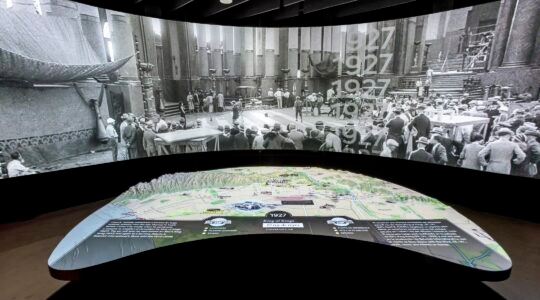 Six months after the Iron Dome defense system rendered Hamas rockets largely ineffective during Israel’s Operation Pillar of Defense in Gaza, I got a tour of the factory that produces its most vital component: a laser.
Six months after the Iron Dome defense system rendered Hamas rockets largely ineffective during Israel’s Operation Pillar of Defense in Gaza, I got a tour of the factory that produces its most vital component: a laser.
The system, which can shoot down rockets within a circumference of 65 sq. miles, takes two trucks to transport and tens of millions of dollars per unit to build. In November’s Gaza fighting, it boasted almost 90 percent accuracy.
The laser is responsible for that success rate – the machine’s brains: once the Iron Dome is in place, the laser detects every flying object and decides – based on trajectory and velocity – whether it’s a bird, a plane or a missile aimed at an Israeli town.
Then, judging from the missile’s arc, the laser can determine the two most vital pieces of information – where the missile came from, and where it’s going. Israel then fires at the launching pad. If the missile headed toward a populated area, a siren goes off warning residents while the Iron Dome shoots an interceptor missile to take out the incoming bomb.
And what decides where that interceptor missile goes, and guides it toward its target? The laser.
All of this happens, by the way, in a matter of minutes. And it’s all automatic.
“You do not have the luxury to have a person in the loop,” said Meir Conforti, head of North American marketing for Elta, the Israel Aerospace Industries subsidiary that manufactures the laser. “You have people in the loop to stop it if they see something is mistaken.”
For all of its functions, the laser isn’t lithe, and looks like a huge, smooth metallic green rectangle that towers over people’s heads. It’s not easy to transport, either. It takes several hours to a day to move it around Israel, and its movements are followed closely. Where the Iron Dome is deployed has become a way for Israelis to judge which border is tensest. Recently, following flareups in Syria, the defense system moved north.
Soon, though, part of the laser may be made in the U.S. For my tour, I tagged along on a visit from Maryland Gov. Martin O’Malley, widely considered a contender for the 2016 Democratic presidential nomination. Elta plans to manufacture parts for the laser in a Maryland factory.
But regardless of how effective the radar is now, Conforti stressed that improving it is key to the Iron Dome’s success.
“The world is not static,” he said. “The radar of today can cope with the current threat.”
But, he added, “Kassam missiles are getting better every day.”
JTA has documented Jewish history in real-time for over a century. Keep our journalism strong by joining us in supporting independent, award-winning reporting.





